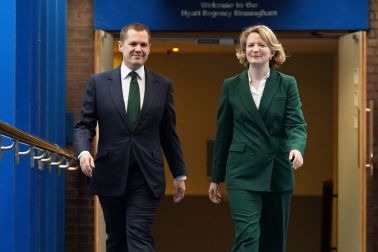Argentina is a third world country with first world taste. It is the land of Malbec, Borges and polo, but decades of economic mismanagement has crippled the country’s economy. Inflation is spiralling out of control: the annual rate hit 138 per cent last month, trailing only Venezuela and Zimbabwe.
It didn’t have to be like this: a century ago, Argentina’s economy surpassed France and Germany, boasting a GDP per capita twice that of Spain. Its geography should have set the stage for success, being the South American country with the biggest variety of natural resources.
As I write, £1 fetches 1259 pesos, in contrast with the 415 pesos it commanded at the beginning of the year.
Every month, shops are raising their pricing to keep up, while wages are lagging behind. The minimum monthly wage currently stands at 132,000 pesos, or £112. International travel is almost unheard of, with purchasing power abroad having plummeted. Strangely, people continue to splurge on daily pleasures like there’s no tomorrow
Dollarisation, as witnessed in Ecuador, El Salvador, and Zimbabwe, is no silver bullet
This is the background for the presidential run-off between the anarcho-capitalist Javier Milei and his Peronist opponent Sergio Massa. With two-fifths of the population in poverty, their economic plans will be what wins the electorate’s loyalty.
Milei’s big idea is dollarisation. Dollars are king, and Argentines are accustomed to stashing wads of them under their beds. In a race against time, they desperately spend their cash or exchange them for dollars.
Unfortunately, obtaining dollars is not as simple as just going to the bank and changing pesos to your heart’s content. Argentina’s foreign reserves are already minus $4.5 billion (£3.7 billion), so it is understandable that it is hardly keen to sell its non-existent bills.
The government thus puts in place a tricky series of hoops to jump through. For starters, buyers must prove that they are travelling abroad, since buying dollars for the purpose of saving is prohibited. Further, there is a monthly cap of $200 (£165) per month, with taxes stacked on top. Needless to say, this renders the official exchange rate redundant.
However, an illegal parallel exchange rate is tolerated to such an extent that it is not called the black market, but the ‘blue market’. Backstreet vendors, called ‘caves’, operate in broad daylight, being easily found on Google Maps. Visa and Mastercard even give tourists an exchange rate near the blue dollar.
The search for blame is on. To Javier Milei, the fault lies squarely at the feet of Peronism. This populist movement stems from President Perón and his wife Eva Perón (immortalised by Madonna in the musical Evita) in the 1940s. A ‘corporate socialist’ blend of nationalism and labourism, Peronism places emphasis on workers’ rights and the welfare state. Peronism’s benevolence, however, largely takes the form of public sector salaries. Indeed, more than a third of the formally-employed workforce is in the public sector. Looking back, it may have been better placed in investing in bolstering domestic industries.
Milei’s agenda includes swapping the peso for the reliable US dollar and ‘burning down’ the central bank, which has been enabling the government’s money-printing addiction. But dollarisation, as witnessed in Ecuador, El Salvador, and Zimbabwe, is no silver bullet. The government lacks the necessary reserve of liquid dollars, and it remains cut off from international debt markets following a default in 2020.
Massa – the economy minister of the current heavily-criticised government – claims that the ‘worst’ of the crisis ‘is passing’. If he’s right, his last-ditch effort to pull back the electorate from Milei’s cut-throat allure might work. If he’s wrong, then Argentina is set to tango into hyperinflation.






Comments